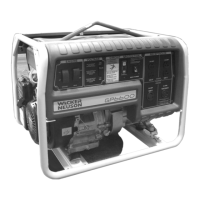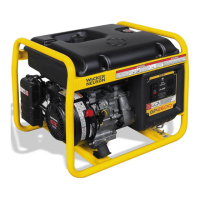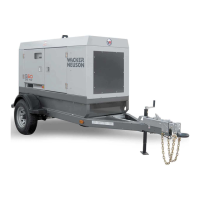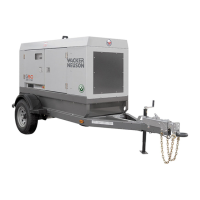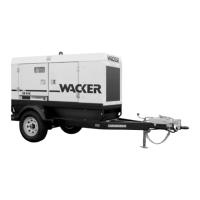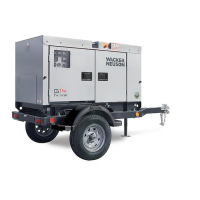Troubleshooting GP Repair
wc_tx000548gb.fm 72
6. Troubleshooting
6.1 Troubleshooting Methodology
See Graphic: wc_gr003415
If a generator problem is not an obvious engine or wire fault, the cause
of the problem will be associated with one of two things: a
malfunctioning generator or faults in the circuit supplying voltage to the
receptacles. By starting the troubleshooting procedures at the
generator output terminal strip (z) you can determine whether the
problem lies within the generator or the circuit supplying the
receptacles.
For troubleshooting a no-voltage condition, you’ll need to rule out
problems with the stator windings (1) and the rotor windings (13). For
a low-voltage condition (any voltage less than 120V), you’ll need to
rule out problems with the stator and rotor windings, a malfunctioning
voltage regulator (16), and problems with the brushes (13) and/or the
excitation winding (15). For a high-voltage condition, you’ll need to rule
out a malfunctioning voltage regulator and/or problems with the
voltage regulator’s sensing wires (y).
For troubleshooting the receptacle circuits, you’ll need to rule out
problems with the main circuit breaker (3), the individual circuit
breakers (5, 6, and 7), and the wiring that connects all the
components.
For troubleshooting a malfunctioning auto idle circuit, you’ll need to
rule out a blown fuse (9) and problems with the idle solenoid, the DC
winding (15), the rectifier (12), the auto idle switch (8), the auto idle unit
(2), and the wiring that connects all the components.
For troubleshooting a malfunctioning anti-afterfire circuit, you’ll need to
rule out a faulty DC winding (15), a blown fuse (9), a faulty engine ON/
OFF switch (11), or a faulty capacitor (10).
Detailed procedures for making the tests are included in the upcoming
sections of this manual.
